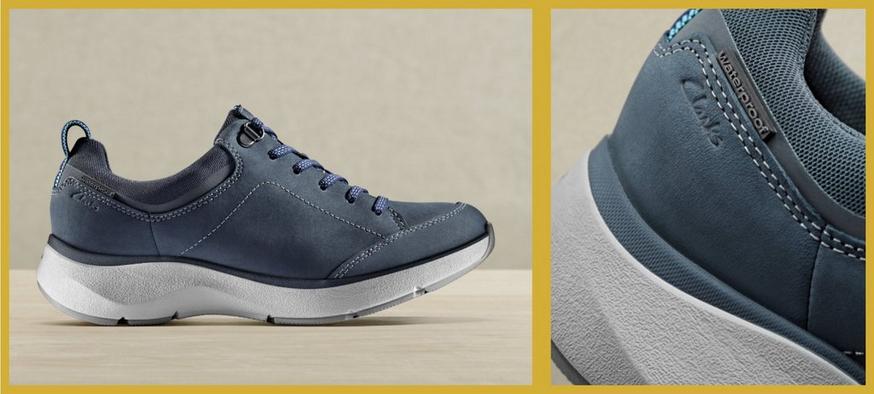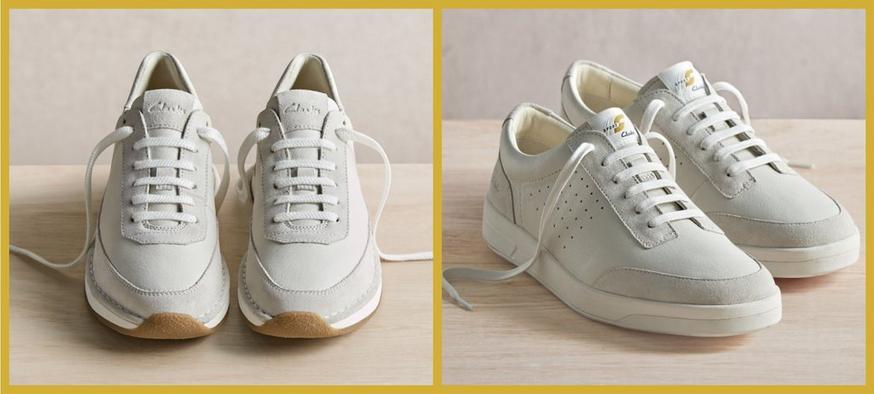How to Make Sure Your Shoes and Boots Are the Right Fit
Published on:
Do your often experience ingrown toenails, bunions or other foot-related issues? It could be incorrectly sized shoes to blame! Whether your kicks are too big, too small, or don’t comfortably fit the width of your feet, you can end up with some seriously achy feet in any circumstance. This pain and discomfort can also extend into your ankles, knees and back – so wearing shoes that are the right fit couldn’t be more important!
Life would be so much easier if we could just rely on sizing alone – however, since brands each size their shoes slightly differently, it’s always best to try on shoes and check to see how they feel. But unless you know what to look out for, how can you be sure you have the right fit?
Enter: the shoe experts. In this guide we explain how shoes and boots should fit, with tips on how to tell if your shoes are too big or too small.

How should shoes fit?
First and foremost, your shoes should fit nice and comfortably. That means they should neither by too tight nor too loose, too big nor too small. Think of yourself as Goldilocks: you want a pair that is just right. Here are some steps to take to find the perfect fit:
Have your feet measured - Pop into one of our stores or use our handy shoe fitting guide so you know the right size to try on.
Fit the shoes to the larger of your feet – Many of us have one foot that is slightly bigger, so choose the shoe size that is the best fit for this foot.
Try the shoes on both feet - Even if the shoe snugly fits the bigger foot, make sure it’s just as comfortable on your smaller foot.
Get moving - We’re not saying you need to run a marathon, but getting up and walking around gives you a good enough signal of whether your shoes are going to rub or feel uncomfortable.
Wear socks when you try on the shoes - If you would typically wear socks with this pair of shoes, make sure you bring them along for the trying-on process so that you can see how they fit with the extra layer.
Shop for shoes in the afternoon - Your feet swell throughout the day, so it’s best to go shoe shopping (or try on shoes bought online) in the afternoon when your feet are at their largest.
How to tell if shoes are too big or too small
The easiest way to tell if a shoe is too big or too small is to take a look at how much room there is in the toe of the shoe. Generally speaking, there should be about one finger’s width of space between your longest toe and the end of the shoe.
Another way to check this is to slip a finger between the heel of your foot and the heel of your shoe. There should be just enough space for your finger to fit nice and snugly. If your finger slides in easily with space to spare, you should probably go down a half size, while if it’s a tight squeeze, go up half a size.
Is it better for shoes to be tight or loose?
Shoes that are on the tighter side are likely to rub, and since this friction can cause blisters, it's best to have a bit of wiggle room. The ball of your foot should fit comfortably in the widest part of the shoe, and at the heel make sure that you have some room for slight heel slippage. Worried about those pesky blisters? Loose slipping in the heels shouldn't cause blisters if you break your shoes in slowly.
If a pair of shoes does feel too tight, try a half size bigger – as we don’t recommend the whole ‘sticking with it and hoping they’ll stretch’ approach!
Is it OK to wear shoes a size bigger?
Shoe sizing can be totally different between brands and styles, so keep in mind that your shoe size may go up or down. If you’ve tried the shoes on and they fit like a glove, then in theory, the size on the label shouldn’t matter. If the shoes are quite obviously too big, then in the spirit of taking care of your feet, it’s time to change the size! You can use insoles for shoes that are too large, but if you have the chance, it’s always better to find the perfect-fitting pair of shoes.
Many of us are in between sizes, and at Clarks we offer whole and half sizes as well as a range of widths including wide fits for men and women, giving everyone the opportunity to find comfortable, reliable shoes.
Some people like to wear insoles to get the best possible fit—particularly if their feet are quite narrow or don’t have an arch. In fact, insoles are a great way to improve comfort and make shoes fit narrow feet. Once you’ve popped your insole in, use the same steps to check that the shoe fits in all the right places.

How should walking boots fit?
Given their name and intended purpose, it would simply be a disaster if your walking boots didn’t fit properly! Whether you’re out with your dog or halfway up a mountain, the last thing you want to accompany you is a pair of ill-fitting walking boots.
To check they’re the correct fit, try them on in the afternoon with the laces undone and follow our above shoe-fitting tips. You can break them in before taking them on any longer expeditions by going on some brief walks or wearing them around the house. Your dressing gown and walking boots combo has never looked so glamorous.
How should running shoes and trainers fit?
Just like walking boots, it’s super important that running shoes are as comfortable and supportive as possible. Generally speaking, the best fit for running shoes is snugness from the heel to the middle of the shoe, with plenty of wiggle room around the toes. The aim is to feel supported but not restricted!
How should wellies fit?
Given the fact that they usually look quite large, lots of people think they must size up their wellies – but that’s not the case! Even if you’re planning on wearing super thick, bulky socks under your wellies, stick to the normal sizing rules when buying your wellies. After all, there’s nothing worse than the feeling of your feet sliding around in your shoes.
Finding the perfect-fitting pair of shoes is easy with our handy guide. And if you need help searching for the right size shoes for your children, we have a number of in-store and at home options to make the process as simple as possible. Find out more about how we can help you to measure your kids' feet.